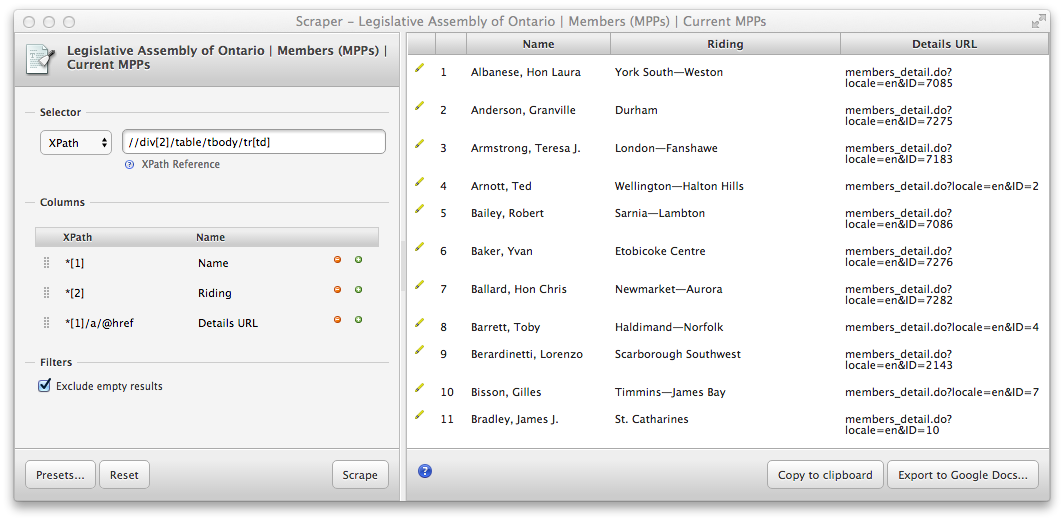

Has six preset cooking categories and convenience features like.

Starts-with() or contains() are not sufficient.Įxample selecting links in list item with a “class” attribute ending with a digit: The test() function, for example, can prove quite useful when XPath’s These cases are very rareīeing built atop lxml, Scrapy selectors support some EXSLT extensionsĪnd come with these pre-registered namespaces to use in XPath expressions: There could be some cases where using namespaces is actually required, inĬase some element names clash between namespaces. Removing namespaces requires to iterate and modify all nodes in theĭocument, which is a reasonably expensive operation to perform by default

Instead of having to call it manually, this is because of two reasons, which, in order If you wonder why the namespace removal procedure isn’t always called by default Downloading and processing files and images.Using your browser’s Developer Tools for scraping.Beware of the difference between //node and (//node).When querying by class, consider using CSS.Using selectors with regular expressions.I appreciate any help you can provide or resource you can point me to. I’ve spent hours on Youtube and trying to work through the syntax to save the time required to manually look up each record that doesn’t come through. Is there a way you think of doing this to simplify the syntax versus the squirrelly way Googlers think about it and thus explain it in the examples that are available online? I can’t find an example that shows this use case: where the specific web page is dynamic based on the 5-digit value in column AB. I thought importxml should work but as you can see, I get nonsense. As many as 10% of the lookups return no match.
#WEBSCRAPER XPATH QUERY ZIP#
Column AB however, accesses the table in sheet 2 “Master 5-Digit…” which includes 33000+ zip codes but actually excludes quite a few. Column C, the assigning state is easy – populates 100% of the time.
#WEBSCRAPER XPATH QUERY CODE#
My file is a publicly available NARA (National Archives) file download formatted and expanded with formulas, etc.Ī couple “index/match” formulas in column C & column AB lookup the state that assigned each SSN and the city state corresponding to the person’s zip code at the time of death. The xpath-query, looks for span elements with a class name “byline-author”, and then returns the value of that element, which is the name of our author.Ĭopy this formula into the cell B1, next to our URL: We’re going to use the IMPORTXML function in Google Sheets, with a second argument (called “xpath-query”) that accesses the specific HTML element above. In the new developer console window, there is one line of HTML code that we’re interested in, and it’s the highlighted one: This brings up the developer inspection window where we can inspect the HTML element for the byline: New York Times element in developer console Hover over the author’s byline and right-click to bring up the menu and click "Inspect Element" as shown in the following screenshot: New York Times inspect element selection But first we need to see how the New York Times labels the author on the webpage, so we can then create a formula to use going forward. Note – I know what you’re thinking, wasn’t this supposed to be automated?!? Yes, and it is. Navigate to the website, in this example the New York Times: New York Times screenshot Let’s take a random New York Times article and copy the URL into our spreadsheet, in cell A1: Example New York Times URL Grab the solution file for this tutorial:įor the purposes of this post, I’m going to demonstrate the technique using posts from the New York Times.


 0 kommentar(er)
0 kommentar(er)
